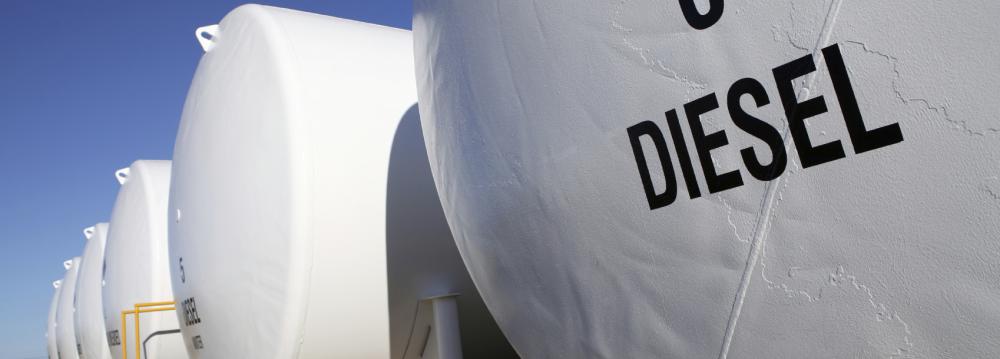The National Iranian Oil Products Distribution Company in Kurdestan Province has exported more than 42 million liters of diesel to Iraqi Kurdistan region over the past year, the head of the company said.
"Plans are underway to boost diesel export capacity by 1 million liters per day as Kurdestan Province is equipped with the necessary supply infrastructure," Fereydoun Yasemi was also quoted as saying by IRNA on Saturday.
Pointing to the excellent quality of the fuel, Yasemi said, "Neither NIOPDC nor border dwellers have problems in selling diesel, as there's a large market for the product."
India, China, the Nakhchivan Autonomous Republic, Armenia, Pakistan, Afghanistan and Sri Lanka also buy Iranian petroleum derivatives.
According to the official, each household in the province is entitled to buy up to 1,500 liters of diesel per day that is why smuggling-related issues are not a matter of serious concern.
"To facilitate diesel export from Sanandaj in the western Kurdestan Province, three loading lines have been added to the oil storage facility," Yasemi said, adding that adopting such measures can help fight fuel smuggling in the region more effectively.
Land Exports
According to Alireza Rajabpour, deputy for exports and imports at NIOPDC, $9.1 million worth of oil derivatives like diesel, kerosene, jet fuel and liquefied natural gas, including LNG and LPG, have been transferred to Iraq, Pakistan, Afghanistan and Armenia via land borders by tanker trucks over the last four years.
Asked about swapping oil derivatives from 2013 to 2015, he noted that Iran imported 420,000 tons of liquefied natural gas, mazut and diesel from northern oil terminals in Neka and Anzali from Uzbekistan, Turkmenistan and Russia and the same equivalent was exported from southern terminals.
Highlighting NIOPDC's policy to reduce export costs, he said that with regard to the pipelines and other infrastructure such as oil storage facilitates, the closer the storage units to border areas, the lower will be the expense for exports, which in turn will help curb fuel smuggling.
"Iran has become an exporter of oil byproducts after years of import," Rajabpour said, adding that the export of LPG has risen to between 1,000 and 1,500 tons a day.
Iran's gas extraction from the giant South Pars field in the Persian Gulf has reached 880 million cubic meters per day, according to media reports, which explains why around 90% of Iranian power plants now burn gas instead of other fuels for power generation.
"All domestic power plants will run only on gas feedstock later this year, thanks to higher output from South Pars Gas Field and the launch of five new phases last month," he said, referring to phases 17-21.
According to the official, the annual export of crude oil byproducts is expected to rise by 200,000 barrels a day to 600,000 barrels daily in the current Iranian fiscal year that ends in March 2018.
The company sold 220,000 barrels of petroleum products per day in the two previous fiscals, according to published reports.


